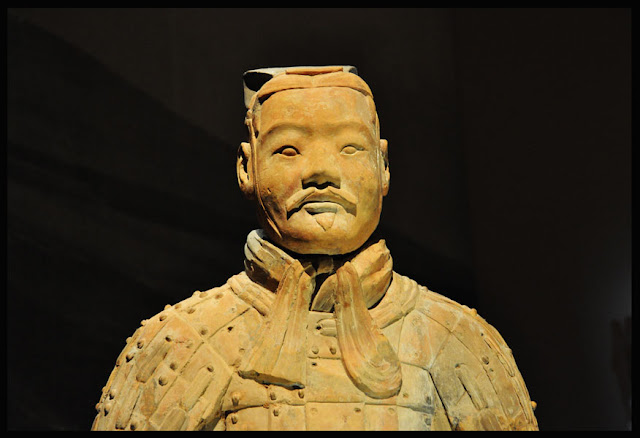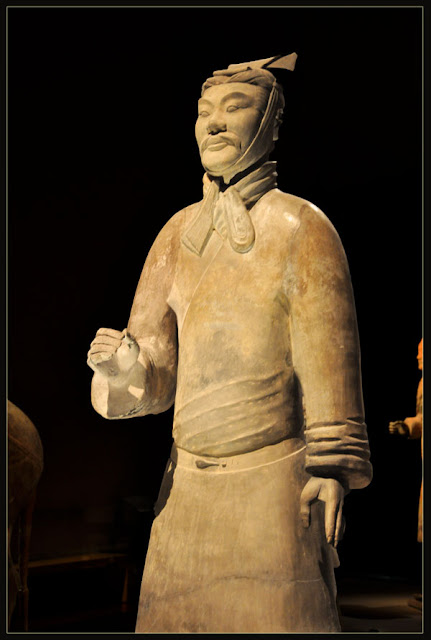The Terracotta Warriors exhibition will finish here in Singapore on October 16.
This exhibition features one hundred artefacts from Shaanxi province
in China. Besides terracotta figures, the display contains important
bronzes and jades from the Qin state before the time of the First
Emperor, Shi Huangdi. The Han dynasty inherited the legacy of unified
China, and charming terracotta figures from this later period show how
the First Emperor’s tomb influenced later burials.
The exhibition highlights new interpretations and poses questions
about what we really know of the remarkable terracotta army. Recent
excavations have revealed a variety of objects, including painted
warriors, acrobats meant to entertain the emperor, chariots and
life-like birds. Many of these are presented in the exhibition.
The
terracotta army buried near the tomb of the First Emperor of China is
perhaps the most important archaeological discovery of our time.
Unearthed in 1974 outside Xi’an, the thousands of pottery soldiers and
horses are striking works of art that tell us a great deal about early
China.
Officers can be identified by their moustaches and headdresses. They were also taller than the average terracotta soldier, but not as tall as a general.
The figures vary in height according to their roles, with the tallest being the generals. The figures include warriors, chariots
and horses. Current estimates are that in the three pits containing the
Terracotta Army there were over 8,000 soldiers, 130 chariots with 520
horses and 150 cavalry horses, the majority of which are still buried in
the pits.
Other terracotta non-military figures were also found in other pits and
they include officials, acrobats, strongmen and musicians.
The figures were also originally painted with bright pigments, variously coloured in pink, red, green, blue, black, brown, white and lilac. The coloured lacquer finish, individual facial features, and actual weapons used in producing these figures created a realistic appearance.
Most of the original weapons were thought to have been looted shortly after the creation of the army, or have rotted away, and the colour coating has flaked off or greatly faded. However, their existence serves as a testament to the amount of labor and skill involved in their construction.
If you have not visited the Asian Civilisations Museum to see the Terracotta Warriors, do so before this fine exhibition finishes on October 16.
This is the second in a series of blog posts on the exhibition.
First one is HERE on "the suit of armour"
Terracotta Warriors: The First Emperor and His Legacy
24 Jun 2011 - 16 Oct 2011
This
exhibition is organised by the Asian Civilisations Museum, in
partnership with the Shaanxi Provincial Cultural Relics Bureau and the
Shaanxi Cultural Heritage Promotion Centre, People’s Republic of China.
1 Empress Place
Singapore 179555
Singapore 179555
please stay with us as we take you through the exhibition over the next few days.








No comments:
Post a Comment